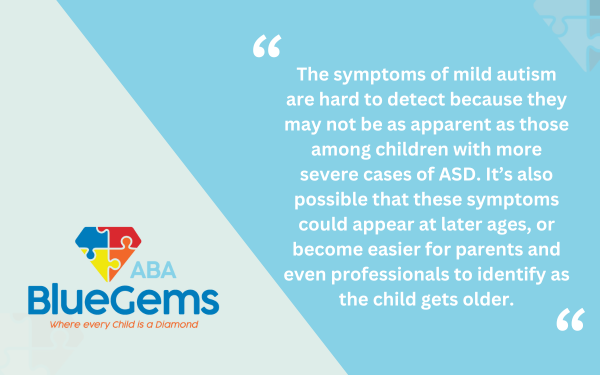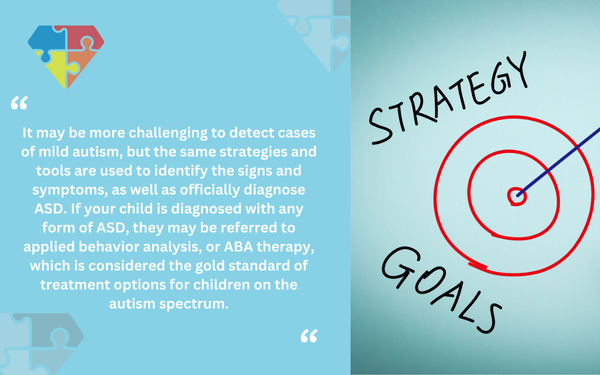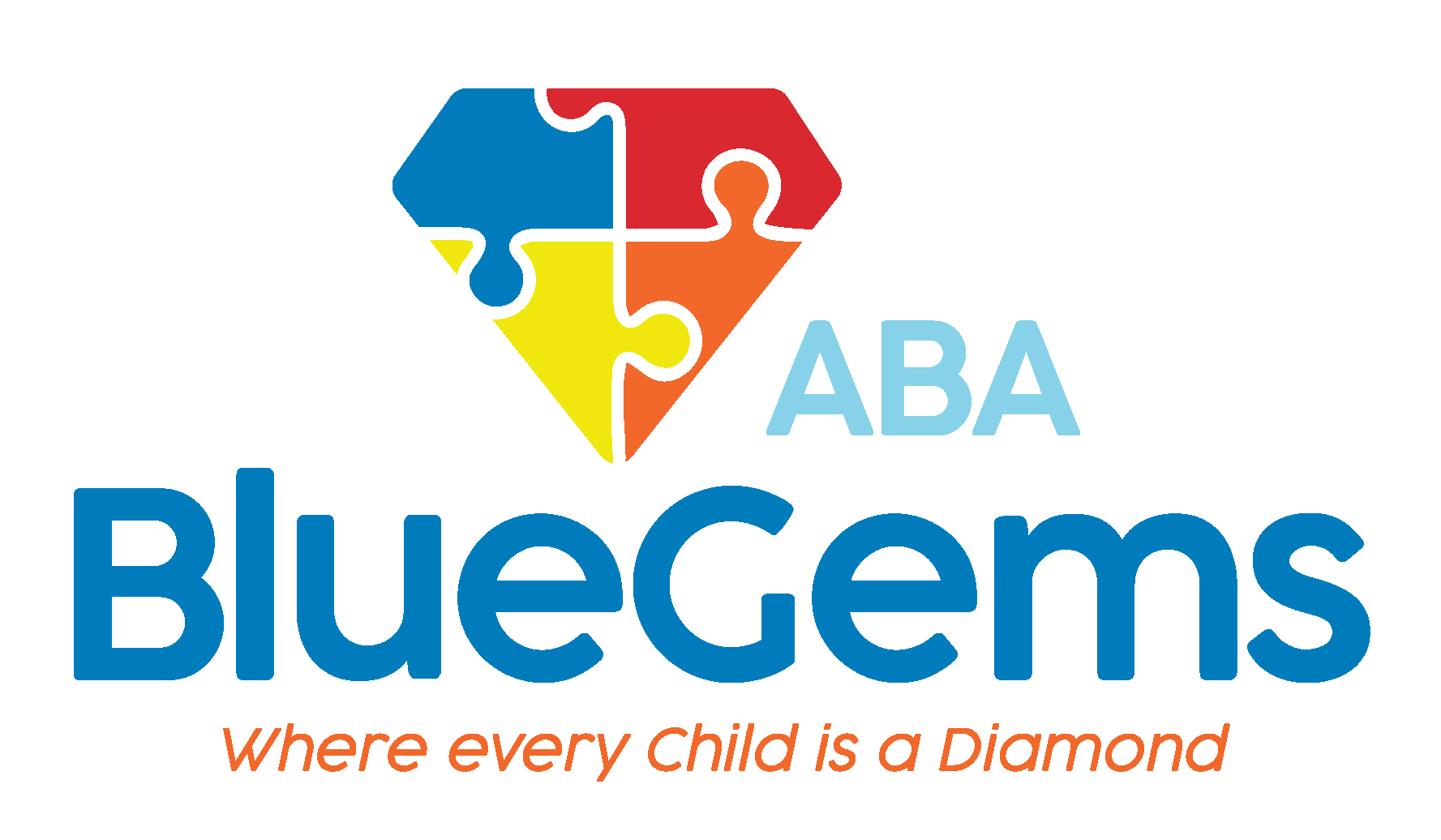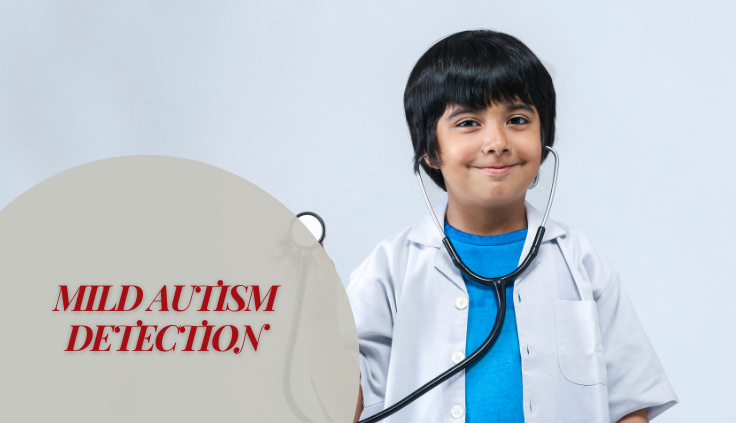Mild Autism Detection
Compared to some other diseases and conditions, autism spectrum disorder (ASD) can be challenging to identify and accurately diagnose. That’s because there is no medical examination or blood test that can definitively determine whether a child has autism.
Instead, ASD diagnoses are given based on the observation of certain signs, symptoms and behaviors that exhibit themselves in children on the autism spectrum. While some of these signs and symptoms can appear from an early age, most ASD diagnoses aren’t given until around the age of 4 — when the symptoms become more prevalent and easier to identify.
Today, there are many great screening tools and strategies that professionals use to identify the early warning signs of ASD and to conduct in-depth evaluations. Still, many challenges remain in accurately diagnosing autism every time.
Part of the reason for this is that every child is unique, and how their signs and symptoms exhibit — as well as what signs and symptoms they have — can certainly span a wide spectrum. This is especially true of children who have a mild case of autism.
Below, we’ll discuss what mild autism is as well as the methods used for mild autism detection.
Table Of Contents
What is Mild Autism?
Mild autism isn’t an official term, nor a subset of ASD. Instead, the term generally refers to individuals who have a less severe case of ASD than others.
Before ASD was coined a term more than 10 years ago, individuals with mild autism may have been diagnosed with Asperger’s syndrome, which is often referred to today as high-functioning autism.
Under the criteria established for diagnosing ASD according to the Diagnostic and Statistical Manual of Mental Disorders (DSM-5), individuals who would require Level 1 support for autism would generally be placed into the “mild autism” category.
These individuals typically require less support than individuals with more severe forms of ASD, and have a higher likelihood of living independent lives.
Why is Mild Autism Difficult to Detect?
The symptoms of mild autism are hard to detect because they may not be as apparent as those among children with more severe cases of ASD. It’s also possible that these symptoms could appear at later ages, or become easier for parents and even professionals to identify as the child gets older.

The milder the symptoms are, the easier they are for the child to mask, or hide. This is especially true among girls, who commonly mask their autism symptoms more than boys do.
| Symptom Category | Examples |
|---|---|
| Communication and Social | Missing developmental milestones |
| Repetitive Behaviors | Hand tapping, repeating behaviors |
| Restrictive Interests | Narrow focus on a single topic |
| Sensory Sensitivities | Strong reactions to sounds, textures |
There’s nothing inherently different about diagnosing a child with mild autism as it is for diagnosing any other “form” of ASD. Specific criteria under the DSM-5 must still be met for a professional to officially diagnose a child with mild autism as all other ASD cases.
What are the Symptoms of Mild Autism?
According to the DSM-5, a child must exhibit the following behaviors in order to be diagnosed with ASD …
- Communication and social issues: They must have a deficit in communication and social interaction skills, including not meeting certain developmental milestones typical for their age.
- Repetitive behaviors and restrictive interests: They must exhibit repetitive behaviors such as tapping their hands, or repeat the same behavior constantly. In addition, they will often display intense interests in a topic, action or activity that is very narrow and limited.
- Sensory sensitivities: Many children with ASD are often either hypersensitive or hyposensitive to sensory stimuli. Certain sounds, touches, tastes and smells, for instance, may make them feel easily overwhelmed, or they may be drawn to them.
The symptoms are the same in all children with ASD, no matter where they fall on the autism spectrum.
| Mild Autism Characteristics | Explanation |
|---|---|
| DSM-5 Level | Level 1 Support |
| Functionality | More likely to live independently |
| Support Requirement | Less support needed compared to severe ASD |
| Historical Diagnosis | Previously Asperger’s syndrome |
| Detection Challenge | Symptoms are often masked, especially by girls |
How Can Mild Autism Be Detected?
Parents, caregivers and other family members should pay attention to their child’s development in the early stages of their life. They should be aware of important developmental milestones, and ensure that they are hitting them around the ages that are suggested by professional organizations.
It’s important to take your child to regular well visits with their pediatrician, as this gives a professional an opportunity to observe the child and talk with you about their habits, behaviors and overall development.
In addition, pediatricians should administer certain screening tools such as the M-CHAT, which work to detect the early signs of autism. This ensures that parents are aware of the signs of ASD, as well as are on the lookout for the potential symptoms.
Blue Gems ABA Diagnoses and Supports Children with Mild Autism
It may be more challenging to detect cases of mild autism, but the same strategies and tools are used to identify the signs and symptoms, as well as officially diagnose ASD. If your child is diagnosed with any form of ASD, they may be referred to applied behavior analysis, or ABA therapy, which is considered the gold standard of treatment options for children on the autism spectrum.

At Blue Gems ABA, we have a team of professionals who are specifically trained to spot the signs and symptoms of mild autism, and officially diagnose ASD if appropriate.
We also have a team of experienced therapists who administer ABA therapy on a one-to-one basis, helping children with autism build the social, communication and daily life skills with which they typically struggle.
To learn more, please contact us today.




